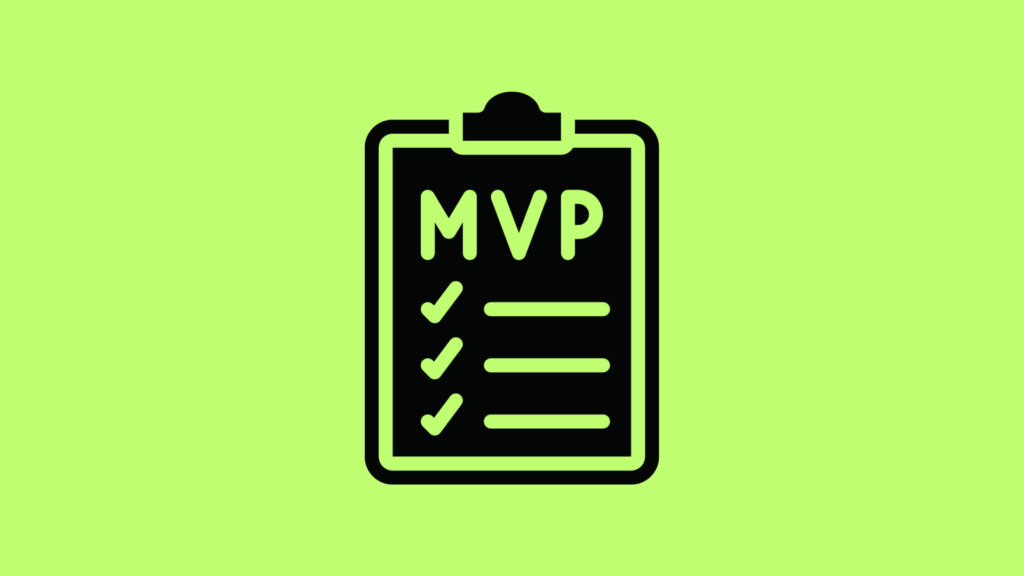Software as a service (SaaS) has become one of the most popular business models in the technology industry. SaaS provides users with access to software applications over the internet, usually via a subscription model. This allows businesses to provide services and capabilities to customers without requiring them to install and maintain software locally.
For SaaS startups, getting a minimum viable product (MVP) to market quickly is critical. An MVP is a pared down version of the final product with just enough features to satisfy early customers and provide feedback for future development. Building an MVP provides numerous benefits that can set up a SaaS business for long-term success.
Validating the Market
One of the biggest advantages of an MVP is that it allows startups to validate their market and core assumptions about their SaaS product. Releasing an MVP collects real data on whether customers are interested in the product and gets feedback on which features are most useful or need improvement.
Rather than investing months or years building a full-featured product that customers may not want, an MVP enables a fail-fast approach. If the MVP gains little traction, founders can iterate on the concept or pivot to an entirely new idea before wasting too much time and money.
Establishing Product-Market Fit
Product-market fit occurs when a product effectively satisfies an existing market demand. For SaaS businesses, achieving product-market fit is essential to scaling and growth. An MVP can help find that ideal alignment between what customers want and what the SaaS product provides.
By starting basic and incrementally adding features based on user feedback, startups can fine-tune their SaaS product to solve real problems for real customers. This not only creates a better product, but one that is tailored to a specific market’s needs and is more likely to spread through word-of-mouth.
Building a Feedback Loop
The goal of an MVP is not just to build a product, but to establish an ongoing feedback loop with users. This feedback loop provides insights that inform priorities and features for future product development.
SaaS products do not remain stagnant after launch. They must constantly iterate to add functionality, fix bugs, and meet changing customer needs. The early users acquired through an MVP provide a valuable source of input on where the product should go next.
Acting on this user feedback to steadily improve the product also shows customers that the SaaS company cares about addressing their pain points over time. This helps establish customer trust and loyalty.
Reducing Initial Development Costs
Creating an MVP requires significantly less upfront development effort compared to building a full-featured product. By eliminating non-core features, startups can get their SaaS product to market faster with fewer engineering resources.

This allows product concepts to be validated without taking on a large payroll or burning through investor capital before revenue starts coming in. The funding saved by starting with an MVP can instead be used to support future development and growth of the SaaS business.
Attracting Investors and Talent
Although rudimentary, an MVP can be instrumental in attracting the interest of investors and talent. By demonstrating an existing product and traction with real users, startups lower the perceived risk and make securing investments easier.
The MVP also shows that the startup’s founders have executed on their vision enough to build and launch an actual product. This level of execution is attractive to talented engineers, designers, product managers who want to join a promising early-stage company.
Getting to Market Faster
The longer it takes to launch, the more risk that competitors beat startups to the punch or customers lose interest. An MVP enables much faster time to market since it focuses on building just the core features that early adopters need.
Read Also:
Why SaaS Businesses Fail In 3 Years
Why Does Performance Testing Matter?
The quicker startups can get their SaaS product into customers’ hands, the sooner they start deriving value from it, providing feedback, and generating revenue. This velocity is key to gaining an edge over rivals in a competitive software market.
Driving Viral Growth
Viral growth relies on current product users to organically spread the word about the SaaS product. The more value users get out of the product, the more likely they are to refer others.
By launching with an MVP, startups can identify and double down on the sticky features users find most useful even with limited functionality. Optimizing for virality early creates competitive advantages in customer acquisition that are hard for competitors to replicate.
Establishing Technical Infrastructure
While the MVP itself may be fairly basic in scope, it provides an opportunity for SaaS startups to establish core infrastructure that sets up future scalability. This includes technical architecture, servers, databases, APIs, and integrations.
Having these scalable technical foundations in place from the start avoids sluggish performance, downtime, and other issues down the road as the product expands. It also minimizes disruptive migrations needed if the initial infrastructure is insufficient.
Testing Assumptions and Hypotheses
SaaS startups are built on assumptions about customer problems, desired solutions, workflow and UX, pricing models, and more. Launching an MVP tests those assumptions with real-world data, giving founders empirical evidence to either validate their hypotheses or reject them in favor of new ones.
Quickly finding out which assumptions are misguided prevents wasting substantial resources on ideas that are not viable. The insights gained redirect product development and business strategy toward more promising paths.
Demonstrating Traction to Partners
Early in a SaaS startup’s journey, prospective business partners often take meetings but want to see product traction before committing to a partnership. Having an MVP with initial customers provides that demonstration of traction.
Partners like sales channels, affiliates, and integration partners are more willing to invest their resources once the SaaS startup can prove their product delivers value in the real world.
Enabling Agile Development
MVPs give startups a chance to establish effective agile development workflows. Rather than specifying requirements upfront in a multi-year plan, agile methodologies like Scrum feature rapid iterative development driven by continuous user feedback.
This flexibility enables startups to respond swiftly to lessons learned from the MVP and changing market dynamics. Focusing on agile processes from the beginning leads to better product-market fit over time.
Creating a Base for Future Innovation
While the MVP starts narrow, it provides the launch pad for future innovation. Once the product gets into customers’ hands, SaaS startups observe exactly how users interact with it on a daily basis. This reveals opportunities to refine workflows, uncover new feature ideas, and enhance the user experience.
Listening to customers and iterating consistently allows startups to expand the functionality and value of the SaaS product over successive releases. Tiny seeds of innovation planted in the MVP can grow into major new capabilities over time.
Building Brand Awareness
Despite its minimal feature set, releasing an MVP establishes a beachhead of brand awareness and starts associating the SaaS startup with solving a particular customer problem.
Getting the product name and brand in front of potential users early on makes it easier to attract them to future releases with fuller capabilities. It takes consistent and sustained touchpoints to build familiarity and trust in a new brand.
Testing Low-Fidelity MVPs
Some startups create low-fidelity MVPs to validate product direction with minimal investment. These could include mock-ups, explainer videos, landing pages, or wizard-of-oz manual testing.
Testing potential users’ reactions to low-fidelity concepts can clarify if a product concept is worth pursuing before actually building a functioning MVP. This technique allows cheap and rapid validation of many ideas.
In summary, launching an MVP can provide tremendous advantages that increase the likelihood of success for SaaS startups. While MVPs require narrowing the initial feature set, they enable startups to get to market faster, achieve product-market fit, drive viral growth, iterate quickly based on customer feedback, and establish scalable infrastructure and processes. Leveraging an MVP effectively positions startups to find product-market fit and scale effectively.


